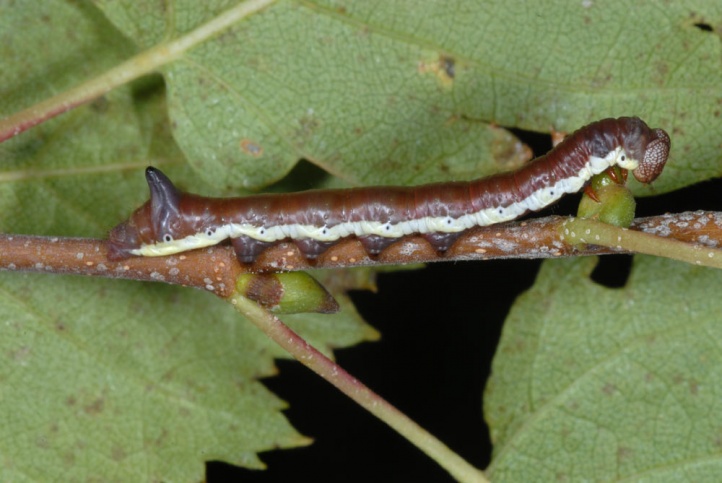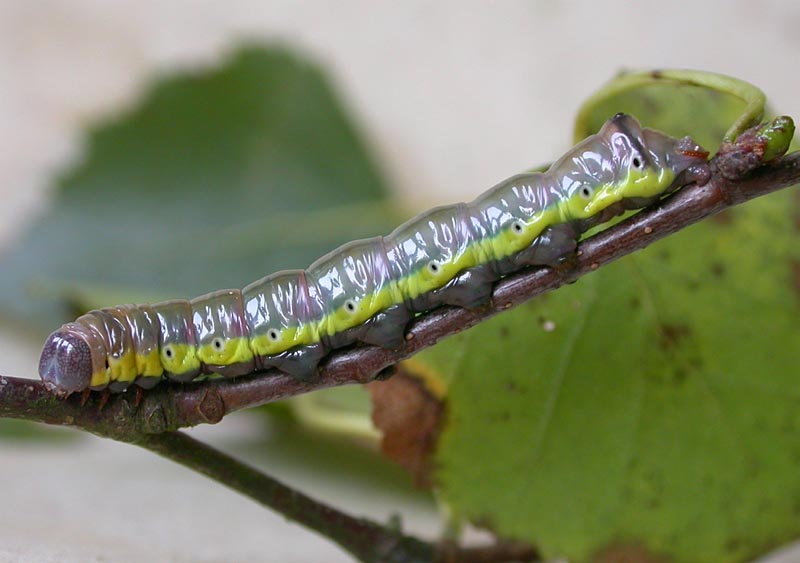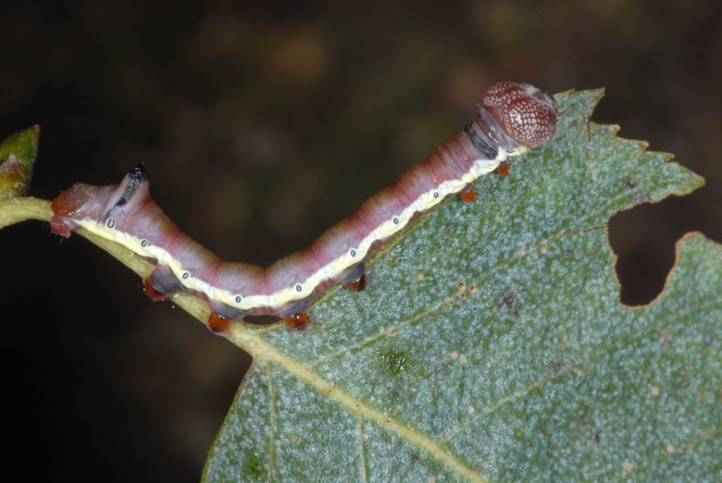Pheosia gnoma
Birch tooth Spinner ( Pheosia gnoma )
The Birch tooth spinner or birch china Spinner ( Pheosia gnoma ) is a butterfly (moth ) from the family of the tooth Spinner ( Notodontidae ).
- 3.1 Flight times and caterpillars
- 3.2 food of the caterpillars
- 5.1 Literature
- 6.1 Notes and references
Features
The moths reach a wingspan of 45 to 50 millimeters, with a forewing length of 19-22 millimeters. Their forewings have a bright base tint. You can see the poplar - tooth Spinner ( Pheosia tremula ) are very similar. At the leading edge near the wing tip there is an oblique black spot, about the but, unlike the poplar - tooth spinner, no bright wing vein running. The vane inner edge is black, inwardly dark brown to light brown gradient over. Unlike the similar type in which the outer edge of the fore wings sit two to three light gray wedge-shaped spots, has Birch tooth spinner in addition to several fine white lines along the outer wing edge, a broad but slightly shorter pure white colored wedge spot at the inner angle.
The caterpillars reach a body length of 50 to 60 millimeters. They shine greasy to waxy, have a reddish-brown, violet or green color and wear on the sides at the level of the spiracles each have a broad yellow longitudinal stripes, which is wider than for the caterpillars of the poplar - tooth spinner. The spiracles are black outlined in white. At the end of the abdomen caterpillars bear a characteristic hump. The coloration of young animals is pale and is only gradually stronger.
Similar Species
- Poplar tooth Spinner ( Pheosia tremula )
Occurrence
The animals arrive in Europe and Asia, east to Kamchatka and the Amur region before. West of the distribution area begins in the north of the Iberian Peninsula and extends across central and southern Europe to northern Scandinavia. The Southern boundary forms the northern Mediterranean coast, the Alps and the northern coast of the Black Sea. They are found from the lowlands to heights of about 1000 meters. They live in forests with birch stocks and high humidity, preferably on sand or silicate soils, such as in moist valleys and Jung, mixing or birch forests. In some places they come but also in drier areas, such as on heaths and dry bogs.
Way of life
Flight times and caterpillars
The moths fly in two generations a year from late April to mid-June and from mid-July to mid-August. The caterpillars from the eggs of the first generation can be found from September to early October, the second from June to July in the following year.
Food of the caterpillars
The caterpillars feed mainly on birch (Betula ), but they are also found in poplars (Populus ). Some authors also call oaks (Quercus ), willow ( Salix) and alder ( Alnus ) as food plants.
Development
Pupation takes place in a world made of cocoon in the soil. The dark brown pupa overwinters.
Threats and conservation
The species is not endangered.








.jpg)
